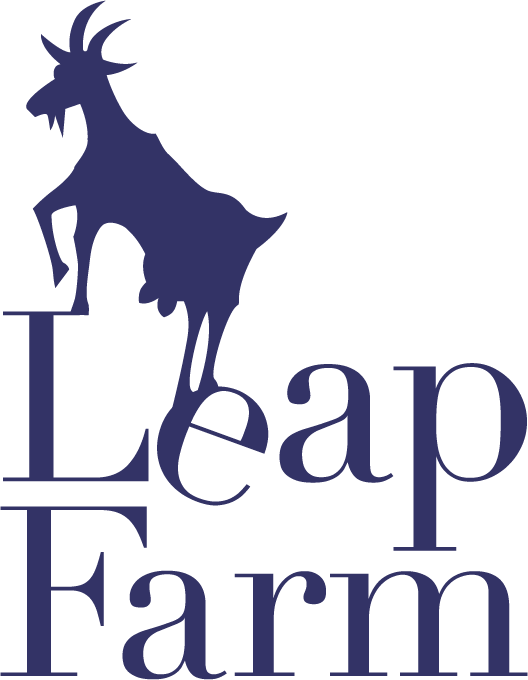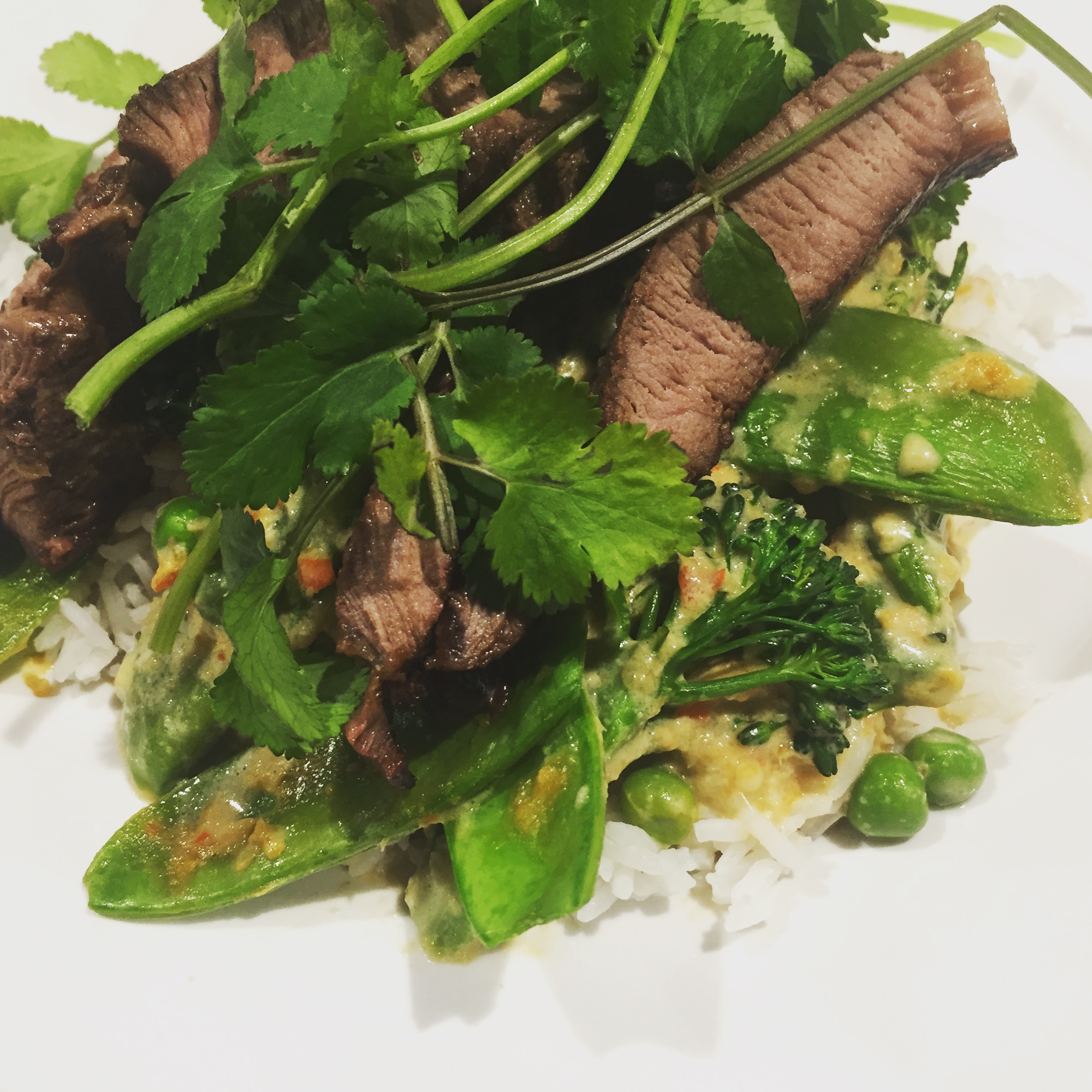Recipes
Leap Farm Rump Steak with Penang Curry
This is the most recent recipe I've been working on that deserves publication, but it does require a little organisation because the meat needs to be marinated. Don't be off-put by the recipe, it is remarkably easy and tastes fantastic. You need....
500g of Rump Steak
To make the marinade, bring the soy sauce to the boil and add the palm sugar (bar 2 tbsps) and allow to simmer on reduced heat until the sauce is thick. Stir in the garlic and cool. Mix with 1 tbsp of peanut oil and marinate overnight (or if you're a bit disorganised, just an hour will suffice).
Blend all the ingredients in a food processor (or Thermomix) until almost smooth.
Heat 1 tbsp peanut oil and stir fry half of the paste (put the other half in the fridge to reuse within 3 days, or freeze if you want it next week) - it should smell wonderful. Add the keffir lime leaves, the fish sauce (if you're using it), the 2 tbsp of palm sugar (held back from the marinade) and stir fry for another minute. Add the coconut milk, bring to the boil the reduce to a simmer to allow to thicken (about 10 minutes), and then add the veggies and simmer until they're tender.
At the same time, either BBQ the rump steak, or cook on a griddle until browned on both sides and medium rare. Make sure you rest it, covered, for at least 5 minutes, then slice into thick strips.
Serve the curry on a bed of rice, with the leaves of the fresh corriander on top. And then try not to eat it all at once!
Marinade for the Beef:
1/4 cup dark soy sauce
1/3 cup cup grated palm sugar
2 cloves crushed fresh garlic
1 tbsp peanut oil (or a light oil if you don't have this)
Penang Curry Paste:
5 fresh long red chillies
1 tsp salt
2 tsp chopped corriander root
3cm piece of fresh ginger
10cm piece of lemongrass
2 eschallots (or a large brown onion if you'd prefer)
2 more (!) cloves of garlic
1/4 cup of water
1/4 cup roasted peanuts
For the curry:
8 kaffir lime leaves
2 tbsp fish sauce (although I leave out)
400ml coconut milk
Veggies of your choice (pictured above is broccoli, snow peas, carrots and peas)
Jasmine Rice
Our advice on how to cook goat:
We are often asked for advice on how to cook our goat – I have included some of our favourite cooking methods here. You can also substitute goat in slow-cooked lamb or beef recipes. For specific recipes, click on the title for a pdf print version.
Goat Backstrap and Eye Fillet
These cuts are tender, and shouldn’t be overcooked, or will go tough. Experience has also taught me that if they're too rare, they are tough. Medium rare is best, and remember to let the meat rest for a few minutes prior to serving.
Use these as you would beef steaks: you can cut into slices to add to a stir fry or flash grill/fry and after resting, slice and add to a salad. For something a little different, smear half a teaspoon of tandoori curry paste over the meat, then barbeque or pan fry paste side down for 2-3mins, smearing the other side with the paste, then turn over and cook for a further 1-2mins. Remove the meat from the pan and allow to rest.
Goat Roast
This cut should be slow cooked. Options include chopping it up and slow cooking for 2-3 hours in a curry, or “tagine” recipe (you only need a heavy, cast-iron casserole dish to produce a tagine-style dish).
Options for roasting include basting with a sauce, marinating, traditional roasting (at 180 degrees C), pot-roasting or slow-roasting. Lightly salt the roast prior to any technique. For slow-roasting, turn your oven to 210-220oC and “sizzle” the cut of meat for 20 minutes (alternatively, sear it in a pan on the stove). This forms a delicious crust. Then turn the oven down to 160oC. Refer to the table below for roasting times. It’s important to rest the meat (out of the oven, cover in al-foil) for 15-20minutes before serving, which is part of the cooking process that the times below are based on.
Rare (very pink in the middle) 10 minutes per 500g
Medium (just pink in the middle) 15 minutes per 500g
Well done (not pink at all) 20 minutes per 500g
If you’re really brave, and want a delicious, melt-in-your mouth dish, slow roast the goat at 140oC (without the “sizzle”) for 3-4 hours. It’s still important to rest the meat even with this technique.
Leap Farm’s Slow Cooked Goat Shank
Click on the title for a pdf pop-up (you may have to enable "pop-ups" in your security settings if it doesn't appear).
Photo credit Alice Bennett
Pulled Goat
Click on the title for a pdf pop-up (you may have to enable "pop-ups" in your security settings if it doesn't appear).
Photo credit Alice Bennett




